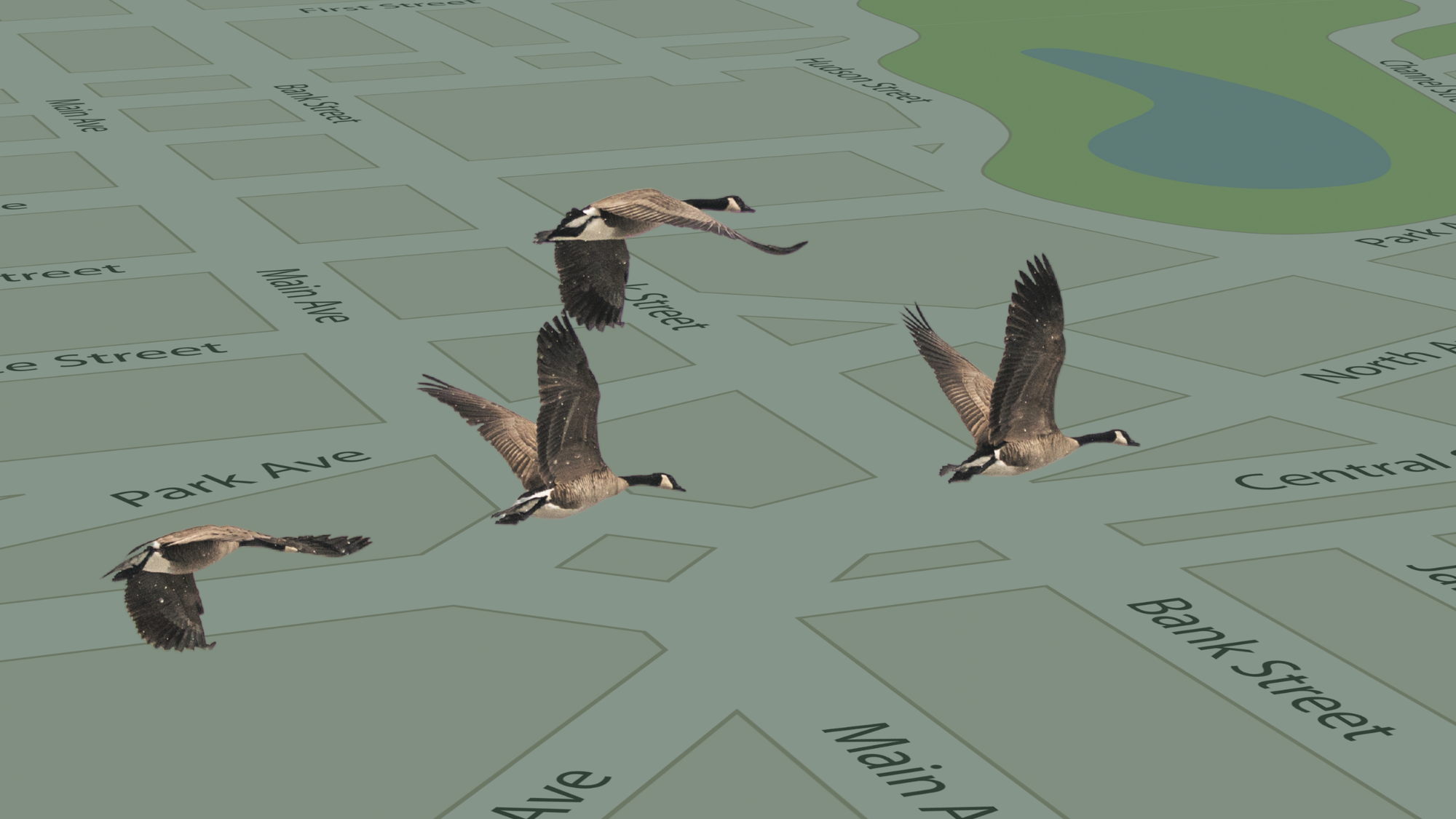Flyways
If political borders cut apart our world, then the flyways of birds crossing them over and over, year after year, do the hard work of stitching us back together.

One way mysticism helps us transcend is to alter our sense of space. Consider individuals recounting profound spiritual journeys, describing otherworldly encounters and unfamiliar realms. It’s often hard to describe, a place wholly different from their home or work or grocery store–maybe even not a space in the same sense as the physically embodied spaces they’re used to–but an actual space, nonetheless. They carry the realness of that experience with them for the rest of their lives. For me, our dominant American reality often feels impenetrable. We share the planet with nature, but favor human creations, overlooking much of the natural world. Everyday mysticism is my exercise in seeing differently, learning from the world around me to shape my sense of purpose and my understanding of who I am and where I belong. No out-of-body experiences required.
Every new moon, I give you a reading report about a book or poem or something else I’ve read that helps me break through that hard shell of the dominant American mindset. When the moon is dark, we look to the stars that help us find our way. This new moon, I’m going a little off-script with (gasp) a movie. I’m so edgy. 😎 I can’t do a series about birds without bringing up this movie, though. It’s called Flyways: The Untold Journey of Migratory Shorebirds. The Kachemak Bay Shorebird Festival hosted a screening this year.
When you think of a globe or a map, what comes to mind? Prior to paying more attention to birds, my main map experiences were the political boundary maps you learn in grade school geography. States and countries color-coded on a map with their capitals labeled with a dot or star. The other maps I was most familiar with were road maps. Big, printed atlases when I was younger, followed by the digital maps most of us use today.
They may look and feel static on a page or screen, but those typical maps depict movement. Road maps, of course, tell us how to get from point A to point B in a vehicle. But even political maps are mostly about movement (and where it has to stop). If you’re in this pink area, you can’t cross this line into the yellow area without permission. And if you want to move the line between those areas, you will need to bring your military with you.
Political boundary maps are also maps of power. If you’re in the orange area, you pay the orange government taxes and you are subject to its laws. You owe orange your loyalty and your presence and the presence of your children and their children. Moving from one box to another is a highly political act with legal consequences.
Those maps shaped my sense of bird migration without me realizing it. In my most recent full moon essay, Free as a Bird, I wrote I used to think birds migrated just a little north in the summer and a little south in the winter. I think my child mind constrained their migration to what I knew was feasible for humans, and my adult brain didn't learn differently for years. Birds migrating between states seemed realistic. Canada was also within reach. (After all, Canada geese got their name from somewhere.) I had been as far south as Florida, but even that seemed a stretch. Would a bird migrate to a climate so different from Ohio’s? Why would “our” birds cross political boundaries less permeable than the border with Canada?
The idea of national or state birds is lovely, but I’m not sure it helped my sense of international space. Ohio has the cardinal. The United States, the eagle. As a kid, I traveled to Guatemala and Mexico. Guatemala has the quetzal, which is completely foreign to Ohio. The national bird of Mexico is an eagle, but it’s a golden eagle, not the bald eagle. Their eagle versus ours. The golden eagle actually migrates throughout the United States, appearing in every state but Hawaii. Both bald and golden eagles were rare in Ohio when I was growing up, but I only remember hearing about one—our national bird. I assumed our birds were ours in the way that our land was ours, that they followed geography as I knew it, with its colored boxes and bold borders.
As I’ve learned about birds and their migration patterns (thanks, in part, to the wonderful migration maps in the Merlin app. Download it. I will keep bugging you until you do.), their migration paths have altered my sense of space and movement. When I spot a bird and feel a connection, I also feel a sense of belonging. The bird and I share space for the moment, share an experience. The bird and I belong together in the moment. But what happens when that bird flies to Chile? Japan? New Zealand? I watched the movie Flyways at a festival celebrating the return of birds that traveled hundreds or even thousands of miles away for the winter. The sense of coming home is a constant, as the same birds are greeted in the southern hemisphere upon their return.
Which raises some questions: Where (and to whom) does the bird belong? Where is home? For me, the answers are: A bird belongs to all of us along its flyway. And a shift in my understanding of the word “home.” Perhaps, like a turtle, the bird carries home with it wherever it goes and finds kin with whoever it encounters that treats it like family. After all, can a bird really be “ours” if we don’t know it or understand it? If we wreck its habitat? If our claim of it excludes the other human family it visits in its path?
Flyways shows teams of scientists throughout the world following and studying the migration of three different bird species. It shows the challenges of learning about and caring for the birds across political boundaries. The war in Ukraine completely derailed one project to follow a bird species. And it's not just the scientists experiencing the discontinuity. The disruption of the bird world by human development and agriculture is rampant, and you experience it along with the birds as you watch the film. As a human, this can feel predetermined, inevitable. But the violence and disruptions feel unnatural and unnecessary from a bird’s-eye view.
I won’t give any more spoilers. I just encourage you to watch. It is one thing to look at a map of a flyway with awe at the sheer distance of the migration and the number of borders a bird might cross. It is another to see video footage of the breadth and diversity of the landscapes the birds visit. Or the diversity of people across nationalities, continents, economies, and languages who follow and study and love the birds. If political borders cut apart our world, then the flyways of birds crossing them over and over, year after year, do the hard work of stitching us back together.
Want to watch Flyways? The feature-length documentary appears to be circulating festivals in Australia at the moment, and I couldn’t find it streaming anywhere. However, the PBS program Nature edited it down to a one-hour episode that you can watch here. (Or at least those of us in the United States media market can. If you’re in another country, let me know if you find it somewhere else! And let’s appreciate the irony of dividing completely non-physical digital internet spaces along national boundaries....)
Are you enjoying what you're reading? Please share with your friends! And remember: this is a reader supported publication. All content is free, but a paid subscription helps keep the lights on. Consider supporting content you love!
(Please note that I am not a non-profit organization. These gifts are not tax-deductible.)
